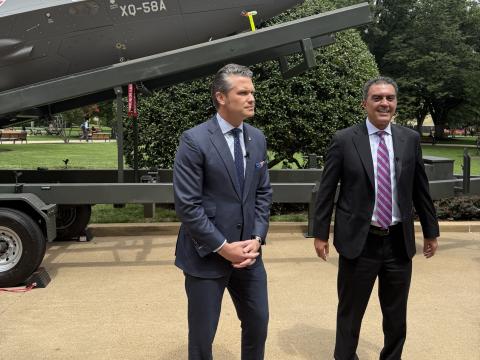DOD Selects Two Pittsburgh Universities to Develop Robotic Trauma Care System
According to an announcement from the University of Pittsburgh School of Medicine (Pitt), the Department of Defense has selected Pitt and neighboring Carnegie Mellon University (CMU) to create an autonomous trauma care system for injured soldiers. Under the so-called TRAuma Care In a Rucksack program or TRACIR, the universities will work to develop artificial intelligence (AI) platforms that enable medical interventions. The trauma care system is meant to fit into a backpack and used for treating and stabilizing injured soldiers in remote locations, in order to extend survival in long medical evacuations. As part of a $7.2 million effort, DOD awarded each school a four-year contract, with $3.71 million going to Pitt and $3.5 million going to CMU.
Pitt officials explained that it would provide a multidisciplinary team of researchers and clinicians from its emergency medicine, surgery, critical care and pulmonary fields, as well as trauma data and medical algorithms, which CMU roboticists and computer scientists would incorporate into a “hard and soft robotic suit.” An injured person would be placed into the suit for treatment powered by monitors that assess the level of injury and artificial intelligence algorithms that would guide the care, including the robotic application of stabilizing measures, such as intravenous fluids and medications.
The principal investigators on the effort include: Ron Poropatich, M.D., retired U.S. Army colonel, director of Pitt’s Center for Military Medicine Research and professor in Pitt’s Division of Pulmonary, Allergy and Critical Care Medicine; Michael Pinsky, M.D., professor in Pitt’s Department of Critical Care Medicine; and Artur Dubrawski, research professor at CMU’s Robotics Institute, the announcement stated.
“Battlefields are becoming increasingly remote, making medical evacuations more difficult,” said Poropatich. “By fusing data captured from multiple sensors and applying machine learning, we are developing more predictive cardio-pulmonary resuscitation opportunities, which hopefully will conserve an injured soldier’s strength. Our goal with TRACIR is to treat and stabilize soldiers in the battlefield, even during periods of prolonged field care, when evacuation is not possible.”



Comments